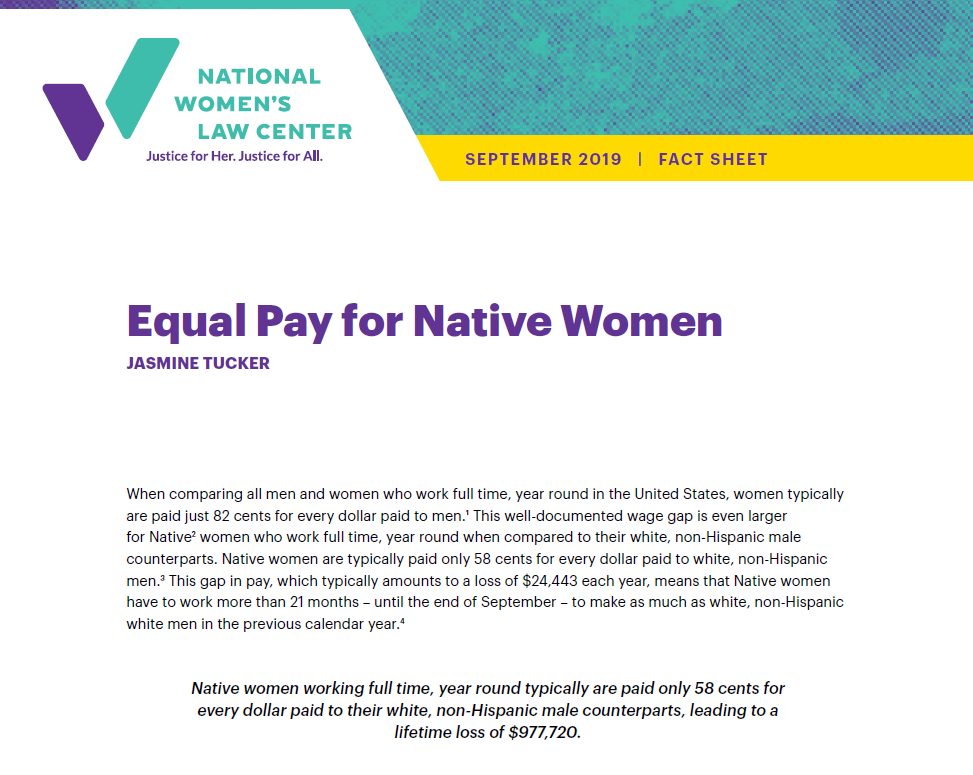Honoring Native Women's Equal Pay Day With A Virtual Talking Circle
The Office of the First Partner and the California Commission on the Status of Women and Girls co-hosted an #EqualPayCA virtual talking circle in honor of Native Women’s Equal Pay Day.
California’s First Partner Jennifer Siebel Newsom in conversation with three phenomenal indigenous women leaders, U.S. Representative Debra Haaland, Chief Justice Christine Williams, and Intel software engineer Georgia Sandoval, addressed Native Women’s (un)equal pay and the importance of closing the wage gap on October 1, 2020. In addition, we are thrilled to announce that we partnered with Native Voice 1 to make the audio recording available through their website and podcast.
The COVID-19 recession has hit women and women of color especially hard. Before the pandemic hit, Native women were making just 57 cents for every one dollar that their White male counterparts were making, and the data shows that this wage gap could only be exacerbated by the economic fallout of COVID-19. Please enjoy this conversation focused on active allyship, advocacy, and structural change to build true equality for Native women in California as we navigate the Covid-19 crisis and recovery.
About Native Women's Equal Pay Day
Native Women’s Equal Pay Day is on October 1, 2020. This is the day Native women must work into the new year to make what White men made at the end of last year. According to 2019 Census data, Native Women earn approximately $0.57 cents on the dollar of White, non-Hispanic men. This means that it takes Native women nearly 22 months to earn what a White man makes in one year.
Not only does the wage gap for Native women exist across occupations, but it actually widens with higher education level. A Native American woman with a master’s degree makes only about $52,000 — approximately the same amount a White man with just an associate’s degree is paid, according to the National Women’s Law Center (NWLC).
Wage gaps must be understood through an intersectional lens, but awareness is only the first step – active allyship, advocacy, and structural change are needed to build true equality for Native women in California and across the nation.
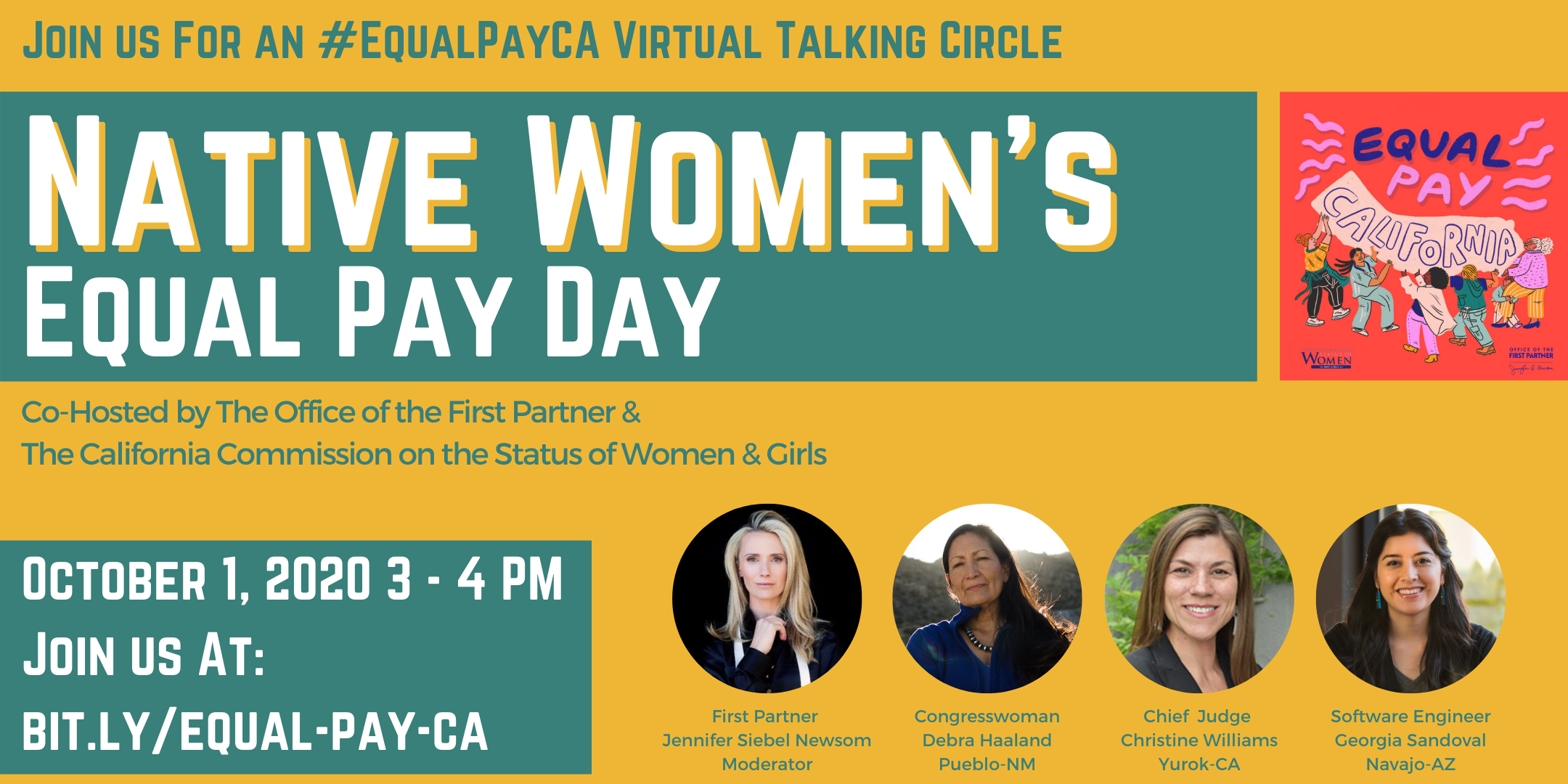
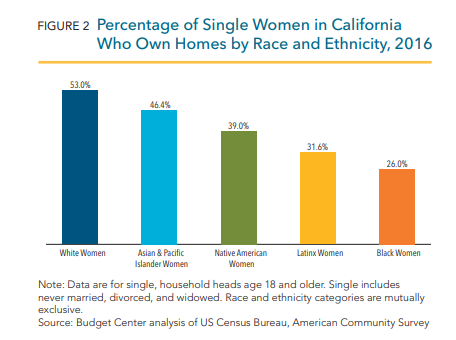
Data from the California Budget and Policy Center shows that single Native American women have the third-lowest rate of home ownership compared to women of other racial groups. 38.3% of Native American women spend more than 30% of their income on housing
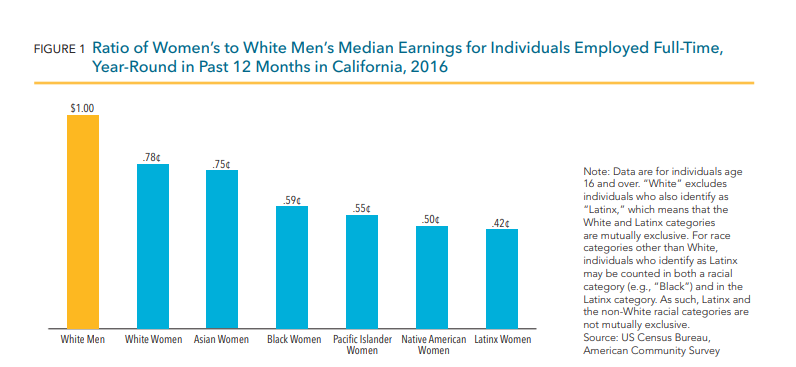
Data from the California Budget and Policy Center shows that for every $1.00 a man earns, a Native American woman earns $0.50. For every $0.78 a white woman earns, a Native American woman earns $0.50.
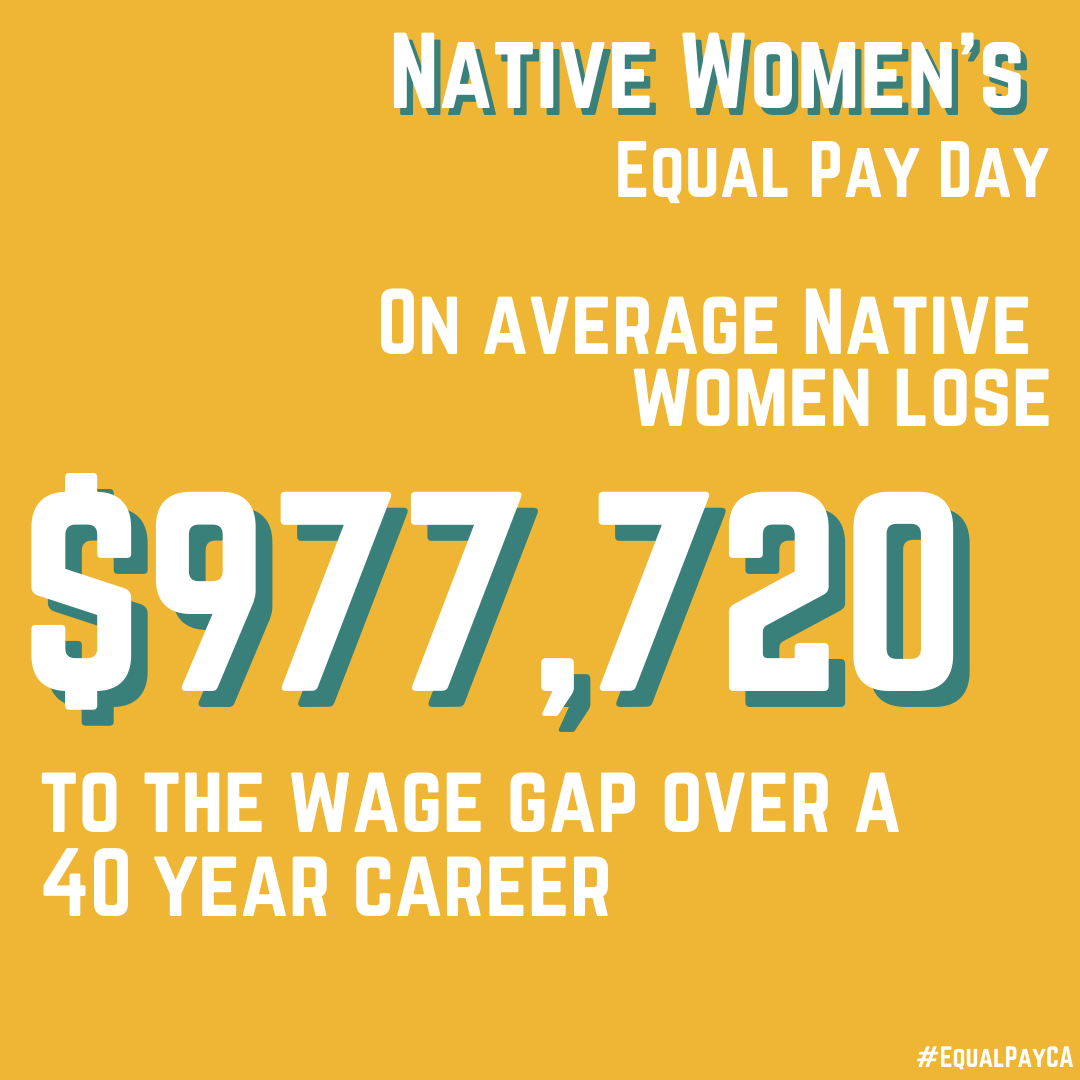
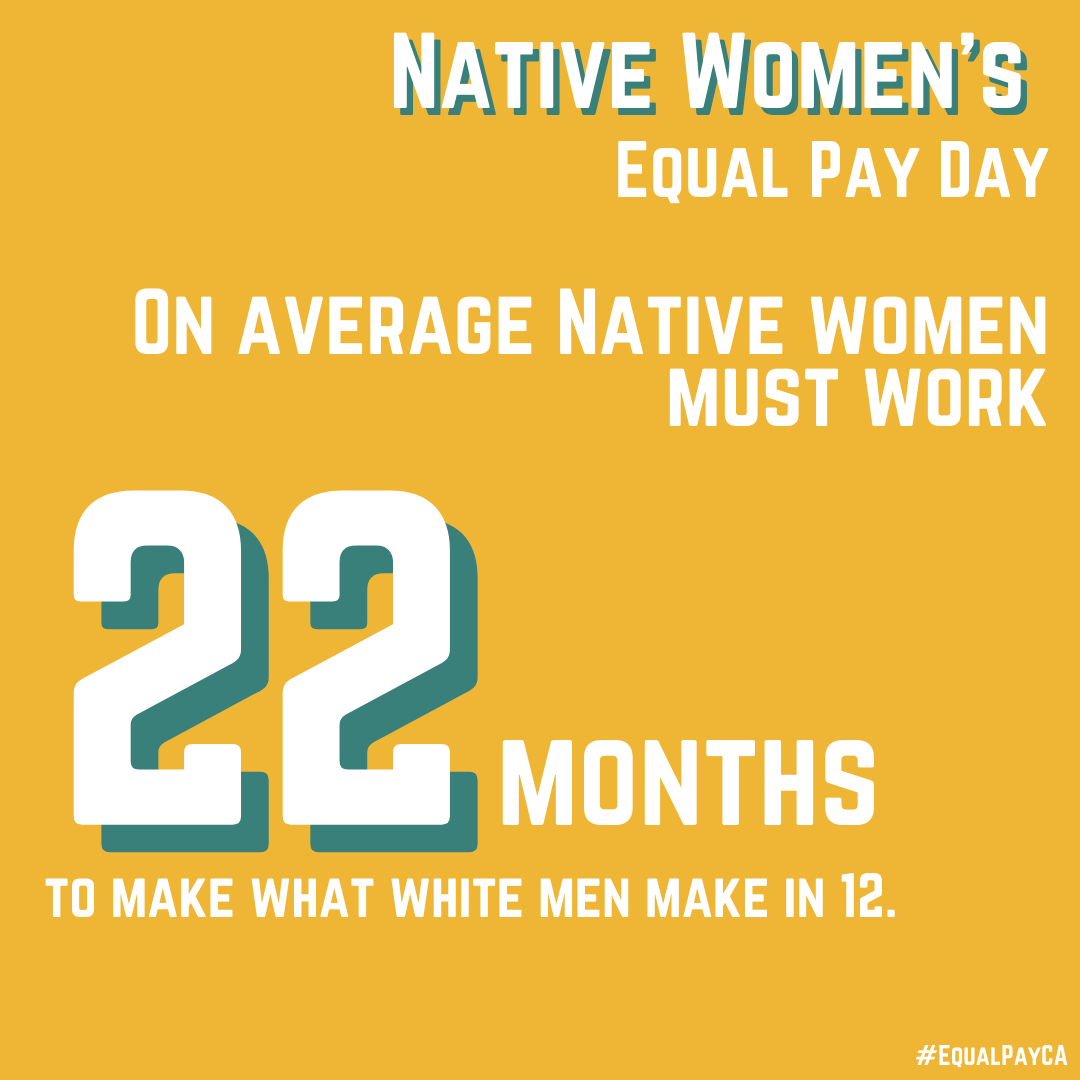
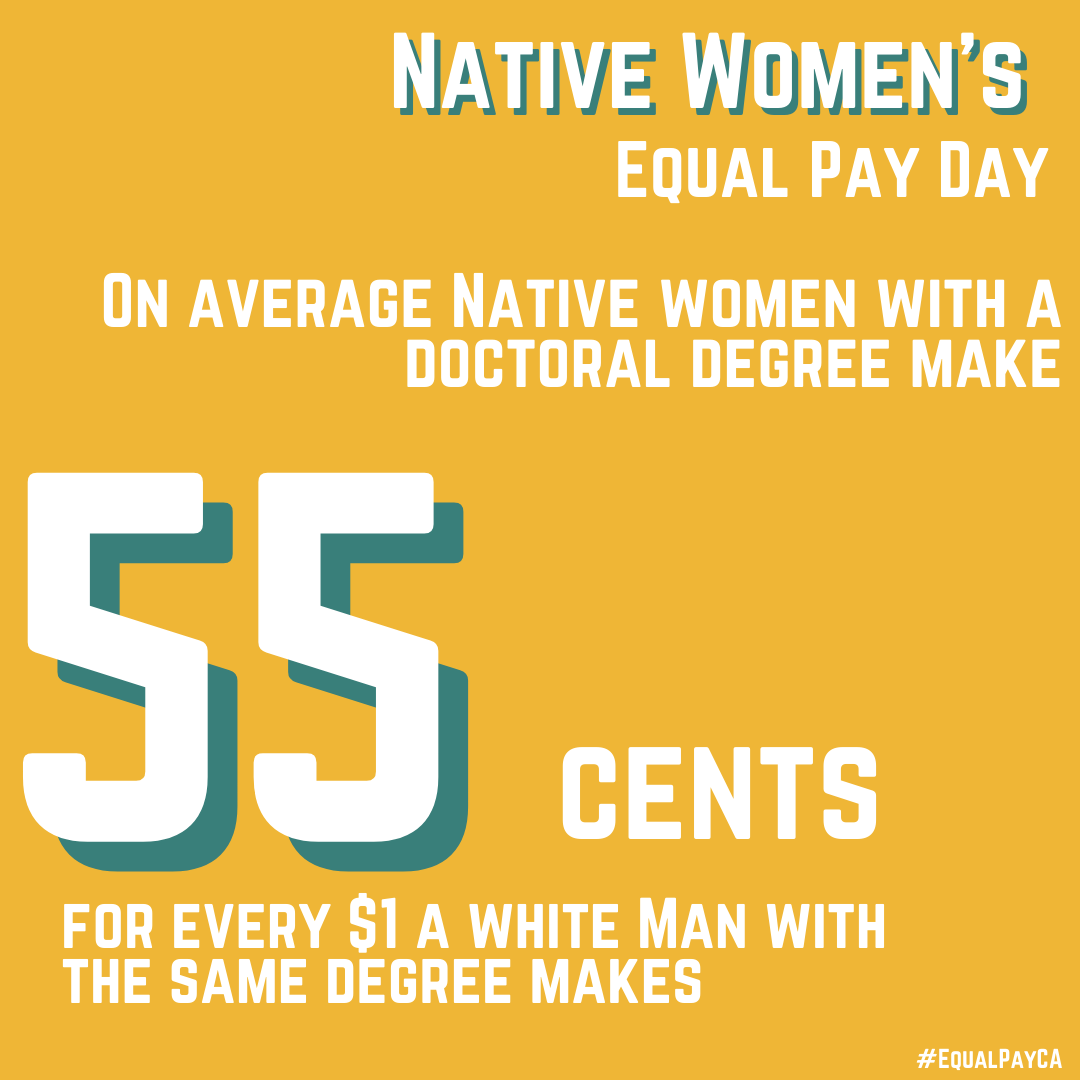
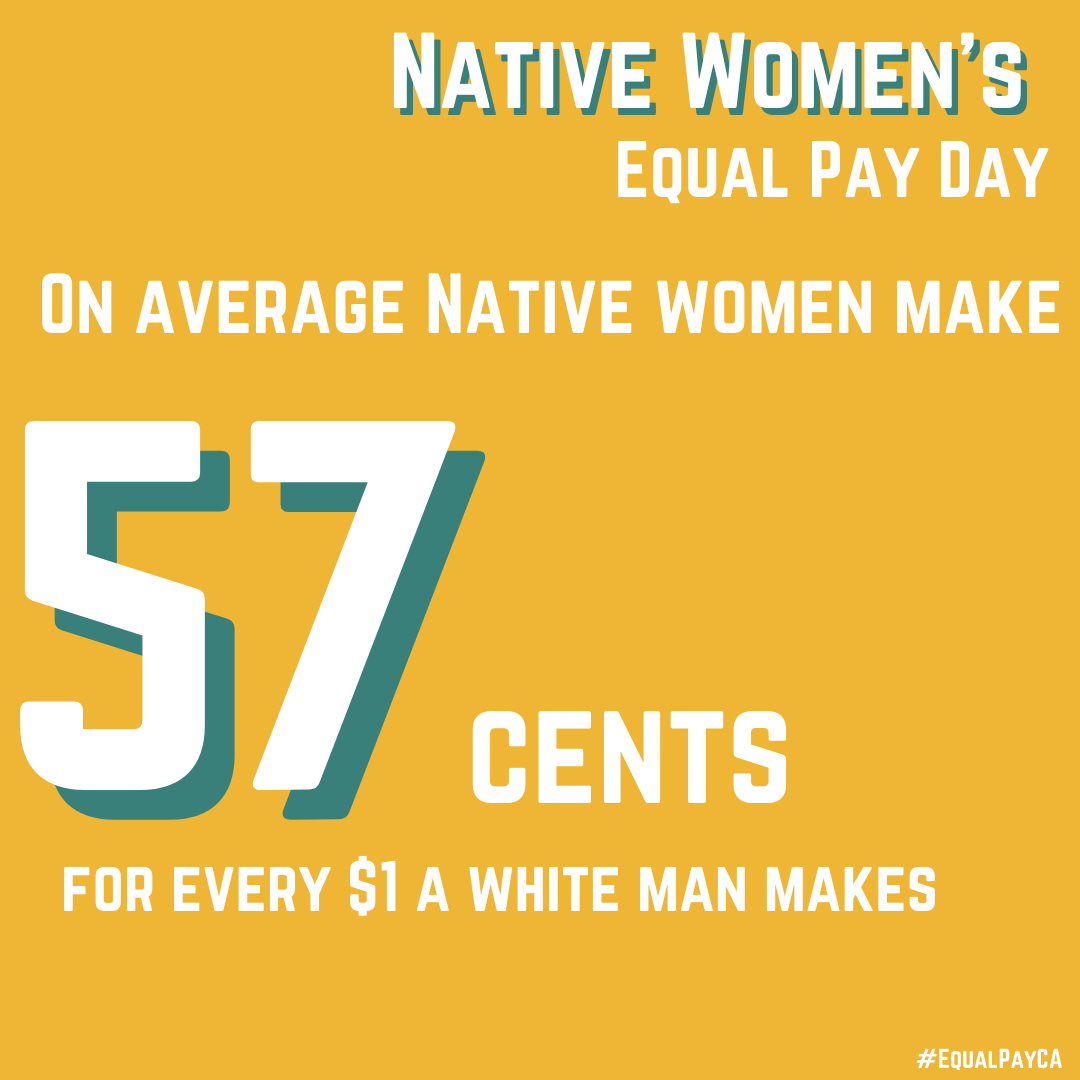
Resources
California Budget and Policy Center:
CDC (Impact of Covid19):
National Indian Council on Aging:
LeanIn.Org:
National Women’s Law Center:
